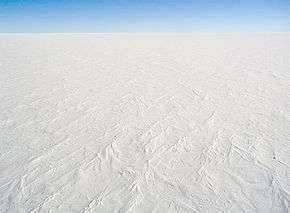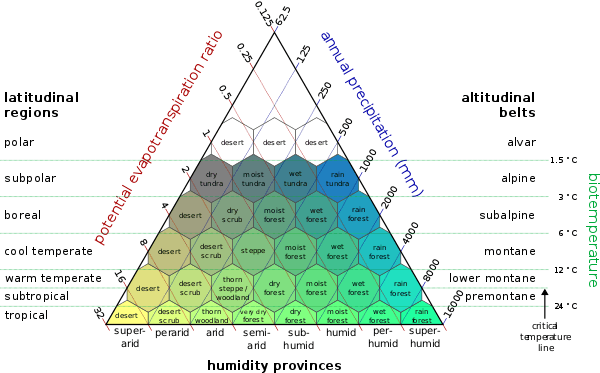Polar desert

Polar deserts are the regions of the Earth that fall under an ice cap climate (EF under the Köppen classification). Despite rainfall totals low enough to normally classify as a desert, polar deserts are distinguished from true deserts (BWh or BWk under the Köppen classification) by low annual temperatures and evapotranspiration. Most polar deserts are covered in ice sheets, ice fields, or ice caps. Ice-free areas have no vegetation whatsoever.
Polar deserts are one of two polar biomes: polar deserts and Arctic tundra. They are called polar deserts because of their flat environment. These biomes are located at the poles of the earth, specifically, the Arctic, northernmost North America, Europe, Asia and Antarctica. Polar deserts are located in the Arctic and Antarctic. Unlike the tundra that can support plant and animal life in the summer, polar deserts are barren with permanent layers of ice. [1] However, there is evidence of life in this seemingly inhospitable environment. The thick ice contains sediments of organic and inorganic substances which create a habitable environment for microbial organisms. These organisms are closely related to cyanobacteria which have a variety of functions, particularly, fixing carbon dioxide from the melting water.[2]

Temperature changes in polar deserts frequently cross the freezing point of water. This "freeze-thaw" alternation forms patterned textures on the ground, as much as 5 m (16 ft) in diameter (as seen in the picture on the right).
Most of the interior of Antarctica is polar desert, despite the thick ice cover. Conversely, the McMurdo Dry Valleys of Antarctica, although they have had no ice for thousands of years due to katabatic wind, are not necessarily polar desert.
Polar deserts are relatively common during ice ages, as ice ages tend to be dry.
Climate scientists have voiced concerns about the effects of global warming to the ice poles in these polar biomes.
References
- ↑ Woodford, Chris (2011). Arctic Tundra and Polar Deserts. Chicago, Illinois: Heinemann-Raintree Books. pp. 6–7. ISBN 978-1-432-94172-7.
- ↑ Priscu, John C.; et al. (1998). "Perennial Antarctic lake ice: an oasis for life in a polar desert". Science. 280.5372 (5372): 2095–2098. Bibcode:1998Sci...280.2095P. doi:10.1126/science.280.5372.2095. JSTOR 2896532.
![]()